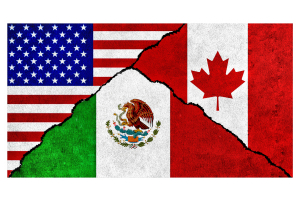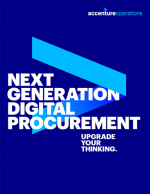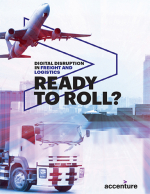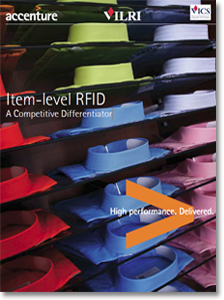Item-level RFID: A Competitive Differentiator
Item-level Radio-frequency identification (RFID) nears a tipping point.
Item-level RFID is becoming a competitive differentiator for several leading companies in the retail supply chain. Chain-wide rollouts by a number of North America’s largest clothing retailers are a clear sign that this technology will soon be broadly adopted by the industry.
As Malcolm Gladwell notes in his influential book, The Tipping Point (2000), new ideas often languish until they suddenly and almost magically catch on.
This may be especially true of the kind of networked systems that have created so much value over the past 30 years – bar codes, the Internet, the global cell phone network, and most recently, Facebook and the other online social networks. In each case, the concept was technically feasible long before it became a mass phenomenon.
The bar code was invented in 1952 but didn’t take off until the late 1970s. Most of the basic engineering of the Internet was completed by 1969 but the Internet didn’t really take off until the early 1990s. In each case, a complex interplay of developers and consumers eventually sparked widespread adoption, almost overnight.
RFID now appears set to catch fire too. An October 2011 survey of 58 suppliers and 56 retailers in North America, conducted by Accenture on behalf of the Voluntary Interindustry Commerce Solutions Association (VICS) – Item-Level RFID Initiative, confirmed that many executives across the entire retail supply chain are convinced that item-level RFID can improve efficiencies and boost sales.
More specifically, the results of this survey and other research conducted by VICS and Accenture suggest:
-
- Item-level RFID may be creating a competitive advantage for early adopters by giving them better inventory accuracy, visibility, and insight, enabling them to improve in-stock positions and increase sales.
- For some processes, the technology can now drive improvements several orders of magnitude better than current standard methods. For example, taking a store inventory, once a project of days or weeks, can now be tallied with lightningfast near-perfect accuracy.
- Costs of RFID tags are falling, and will continue to fall as the rate of adoption increases.
- Most major apparel and footwear retailers will adopt RFID technology in some part of their business within the next 3-5 years if recent momentum continues.
What’s Related




Favorites





